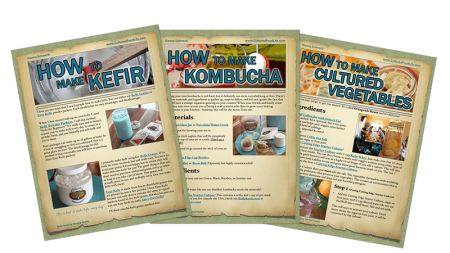
What’s This On My Cultured Vegetables?
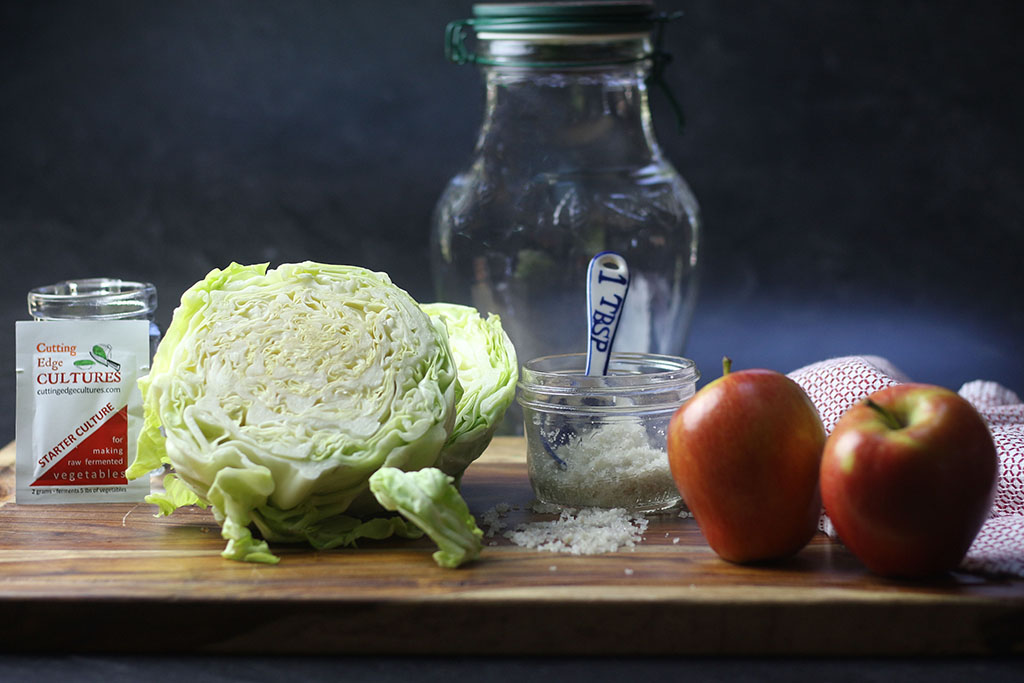
Cultured vegetables are so easy to make with just a few exceptions. First of all, this is one of the safest ways to preserve your vegetables. It is scientifically impossible to get botulism from cultured vegetables. When acidifying bacteria ferment the vegetables, the good bacteria dominates and controls the environment. Botulism can only occur when all the other bacteria die from heating the vegetables (like in canning) and botulism is one of the only bacteria that can survive heat. With all the other good bacteria dead then you’d need to create an anaerobic environment removing all the oxygen (like canning) and botulism can only occur when these two criteria are met. When you ferment vegetables you don’t do either one of these so the good bacteria keeps everything under control.
One of the things that people find most troublesome is what appears to be small areas of white mold growing on the surface of the cultured vegetables. There is no reason for alarm and it is not actually mold but a yeast that they call Kahm yeast. It can be found in cultured foods but is not harmful. This just means the yeasts have become more dominant than the bacteria and this can be because you're not using a culture or the ph is slightly off. It can look scary and unpleasant, and even smell a little strong, but is not a harmful thing. It should be removed from the jar so it doesn’t impart a strong odor or unpleasant taste. If you can’t get it all removed and a little is left in the jar, it won’t hurt you.
This kind of thing almost never happens to me, so I spent some time this year trying to make this type of yeast appear on my vegetables to see if I could help you figure out why it happens. I have a lot of good bacteria and healthy yeast floating around my kitchen from years of fermenting and found it very difficult to reproduce this kind of thing on my vegetables. I really wanted to discover why this was happening to others and not to my ferments. Here is what I discovered from my many science projects on why this can develop on vegetables.
Tips To Keep Your Veggies From Getting Kahm Yeast

Always Use Fresh Vegetables
Not using vegetables that are fresh seems to be one of the fastest ways for this type of yeast to appear on the vegetables. I noticed it most when I used cucumbers and carrots from the store in the winter – when they had sat in my fridge for a while and I hadn’t used them right away. The sooner I used them and cultured them, the less chance I had of developing this Kahm yeast. Using fresh veggies seems to keep this from happening.
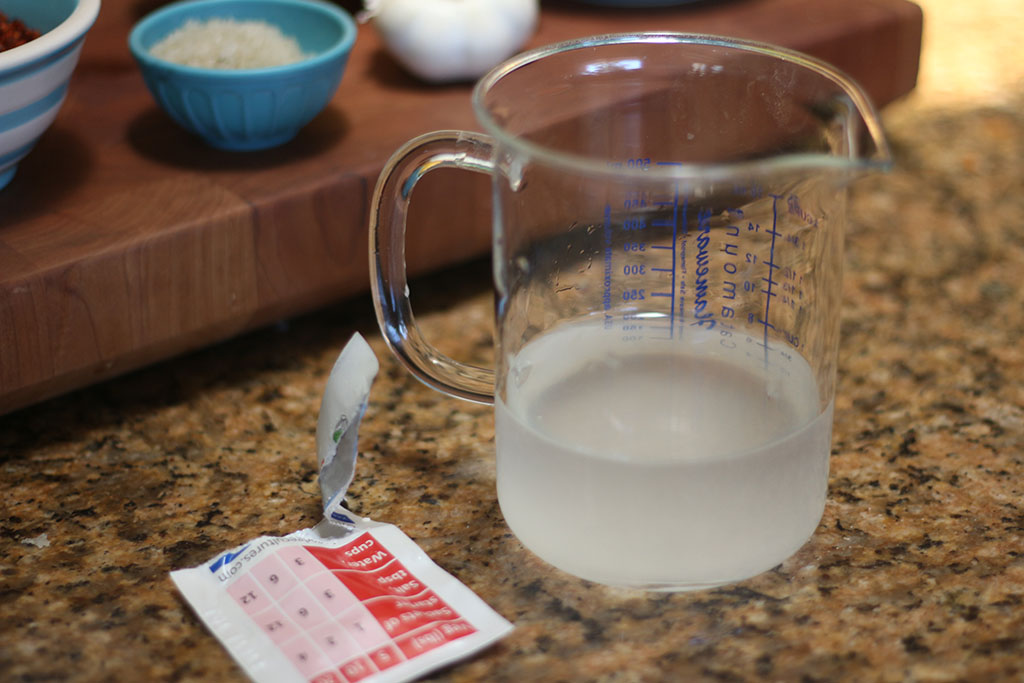
Use a Culture
For the best results and least kahm yeast, I recommend you use a starter culture or kefir whey. I almost always use Cutting Edge Culture to culture my vegetables. It is the best veggie culture on the market and gives you tons of good bacteria. You don’t actually need a packaged culture starter to make cultured vegetables. Just adding salt, water, and submerging the vegetables under the water will allow acidifying bacteria to create an environment for the good bacteria to become dominant, creating billions of probiotics. But sometimes, when there is no added starter culture, the bacteria are not as strong and the yeasts are more dominant and then you get kahm yeast. When you add a culture the bacteria stays at a higher level longer than other cultures and methods and the yeasts stay in balance. I have had very little trouble with this type of white film growing on my vegetables, and one of the reasons is I always use a culture.

Keep the Vegetables Submerged Under Water
Fermentation causes veggies to float to the top of the jar, and this is one of the ways to keep white Kahm yeast from showing up on your cultured vegetables – keep them submerged under the water where the good bacteria and acidifying bacteria keep this problem at bay. However, I’m gonna shoot straight with you. I never worry about this very much. This bubbling means that little microbes are doing their job fermenting my food and I love watching it. So what I usually do when I see they are rising above the water is simply open the jar and push them down with a spoon. Then I close the jar and leave them to do their thing. I really don’t worry about it much because my veggies don’t develop this yeast very often.
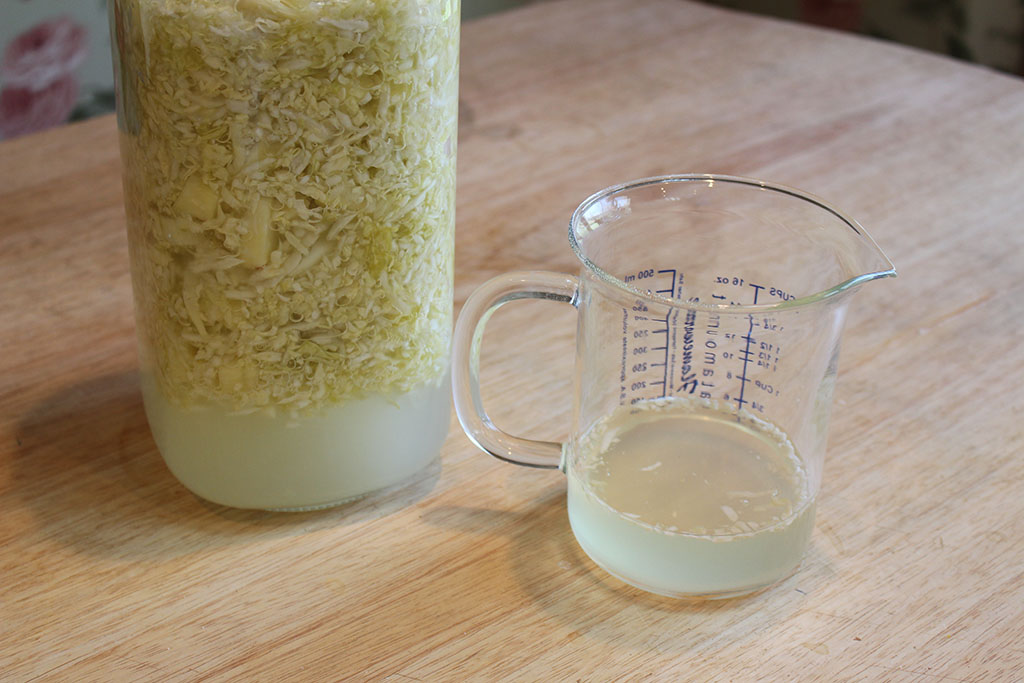
Reusing Your Brine
I’ve only ever seen Kahm yeast when I tried culturing veggies using the brine from store-bought cultured veggies. They almost always get kahm yeast when I do this, because they don’t use added cultures and the bacteria are not very strong. Once you begin to culture your own vegetables, you absolutely can use the brine or juice from one cultured veggie to add to a new batch. But keep in mind that over time the levels of good bacteria diminish so this can cause it to develop the Kahm yeast, and then you’ll need to use a new culture.
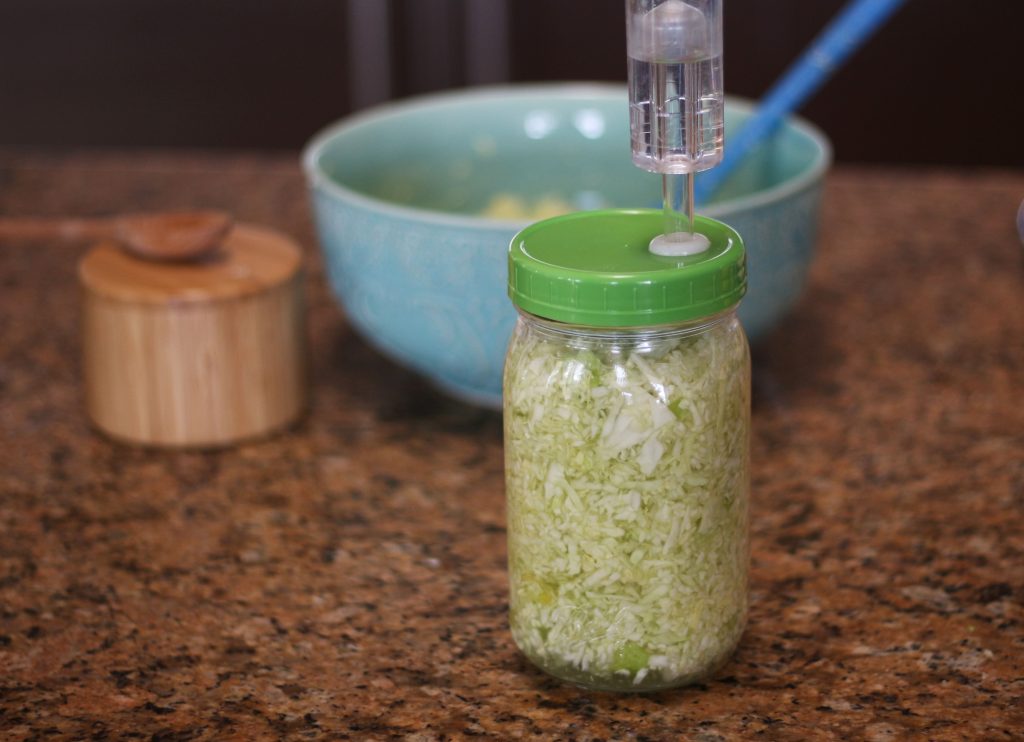
Making Your Vegetables in an Airlock Vessel
Airlock lids can also help with any Kahm yeast and is very effective but not foolproof. If your veggies aren’t fresh or your culture isn’t strong enough there can still be problems. An airlock vessel gives you less problems than other vessels. The vegetables seem to be protected better from exposure to air which can cause the vegetables to turn brown or develop kahm yeast.It also works well to keep your veggies crunchy and crisp and tasting delicious! If you like an airlock lid check out this link. Airlock vessels and jars
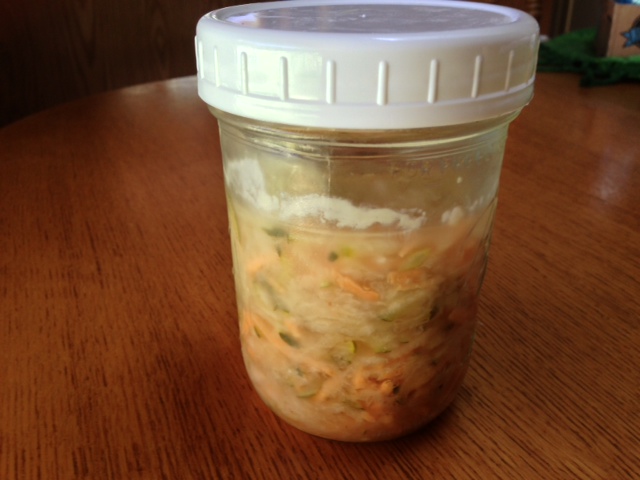
Temperature
Temperature is something that can change how your cultures ferment and letting them ferment in a cooler temperature is helpful if you’re having problems with Kahm yeast (as seen in this picture). Cultured vegetables like it a little cooler – between 63 and 80 degrees Fahrenheit. If they do get Kahm yeast on them, simply scrape it off and place them in the fridge. The cooler temperature can often cause the yeast to stop developing.

Time and salt
Only ferment your vegetables the minimum recommended time on your counter, which is six to seven days for cabbage ferments and three days for other veggies like pickles, tomatoes, and carrots. Adding salt also inhibits the growth of undesirable pathogens, including yeasts and other microorganisms. Too little salt can result in off flavors or mushy vegetables and improper fermentation. If you are experiencing Kahm yeast, add a little more salt to keep the PH balanced. I usually use 1/2 to double the amount if this is happening on a frequent basis.
Are you on the list?
Sign up today and I'll send you my free Getting Started Guide!
Each week I'll send you updates, tips, recipes, and more! You might even be a winner of my weekly giveaway! (starter cultures, memberships, and more!)
Come be a part of my cultured food family!

